全食日的细致日冕
太阳在日全食时看起来的样子。突出的是太阳膨胀的日冕,它向四面八方流出。有关更多详细信息,请参阅说明。
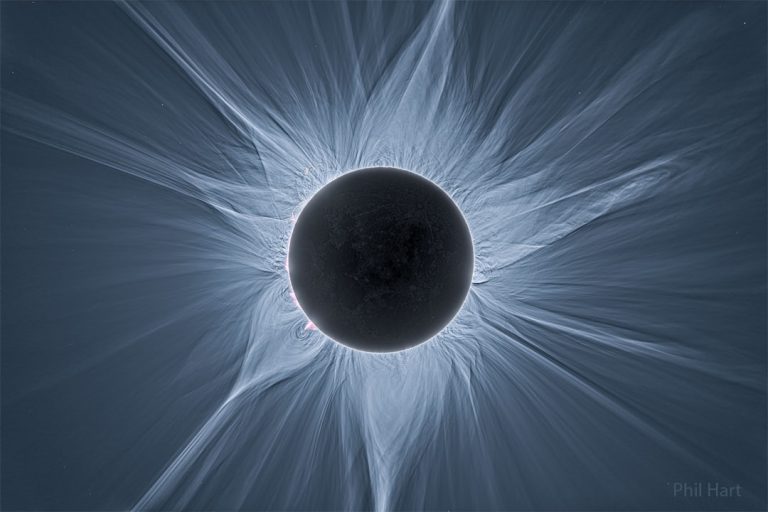
太阳在日全食时看起来的样子。突出的是太阳膨胀的日冕,它向四面八方流出。有关更多详细信息,请参阅说明。

2023年10月9日 A Distorted Sunrise Eclipse Image Credit & Copyright: Elias Chasiotis Explanation: Yes, but have you ever seen a sunrise like this? Here, after initial cloudiness, the Sun appeared to rise in two pieces and during a partial eclipse in 2019, causing the photographer to describe it as the most stunning sunrise of his life. The dark circle near the top of the atmospherically-reddened Sun is the Moon — but so is the dark peak just below it. This is because along the way, the Earth’s atmosphere had a layer of unusually warm air over the sea which acted like a gigantic lens and created a second image. For a normal sunrise or sunset, this rare phenomenon of atmospheric optics is known as the Etruscan…

2023年10月8日 Plane, Clouds, Moon, Spots, Sun Image Credit & Copyright: Doyle and Shannon Slifer Explanation: What’s that in front of the Sun? The closest object is an airplane, visible just below the Sun’s center and caught purely by chance. Next out are numerous clouds in Earth’s atmosphere, creating a series of darkened horizontal streaks. Farther out is Earth’s Moon, seen as the large dark circular bite on the upper right. Just above the airplane and just below the Sun’s surface are sunspots. The main sunspot group captured here, AR 2192, was in 2014 one of the largest ever recorded and had been crackling and bursting with flares since it came around the edge of the Sun a week before. This show of solar silhouettes was…

2023年9月24日 A Ring of Fire Sunrise Solar Eclipse Video Credit: Colin Legg & Geoff Sims; Music: Peter Nanasi Explanation: What’s rising above the horizon behind those clouds? It’s the Sun. Most sunrises don’t look like this, though, because most sunrises don’t include the Moon. In the early morning of 2013 May 10, however, from Western Australia, the Moon was between the Earth and the rising Sun. At times, it would be hard for the uninformed to understand what was happening. In an annular eclipse, the Moon is too far from the Earth to block the entire Sun, and at most leaves a ring of fire where sunlight pours out around every edge of the Moon. The featured time-lapse video also recorded the eclipse through the…
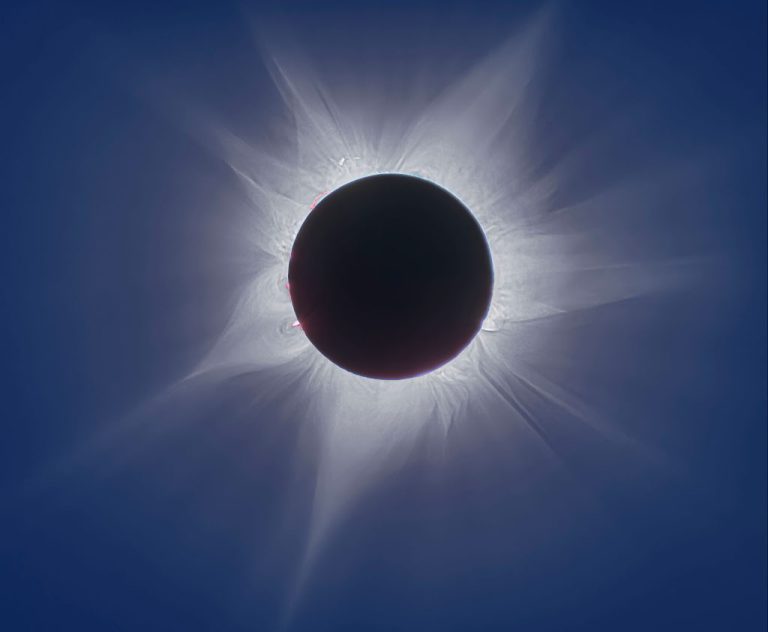
2023年4月29日 Solar Eclipse from a Ship Image Credit: Fred Espenak Explanation: Along a narrow path that mostly avoided landfall, the shadow of the New Moon raced across planet Earth’s southern hemisphere on April 20 to create a rare annular-total or hybrid solar eclipse. From the Indian Ocean off the coast of western Australia, ship-borne eclipse chasers were able to witness 62 seconds of totality though while anchored near the centerline of the total eclipse track. This ship-borne image of the eclipse captures the active Sun’s magnificent outer atmosphere or solar corona streaming into space. A composite of 11 exposures ranging from 1/2000 to 1/2 second, it records an extended range of brightness to follow details of the corona not quite visible to the eye during…
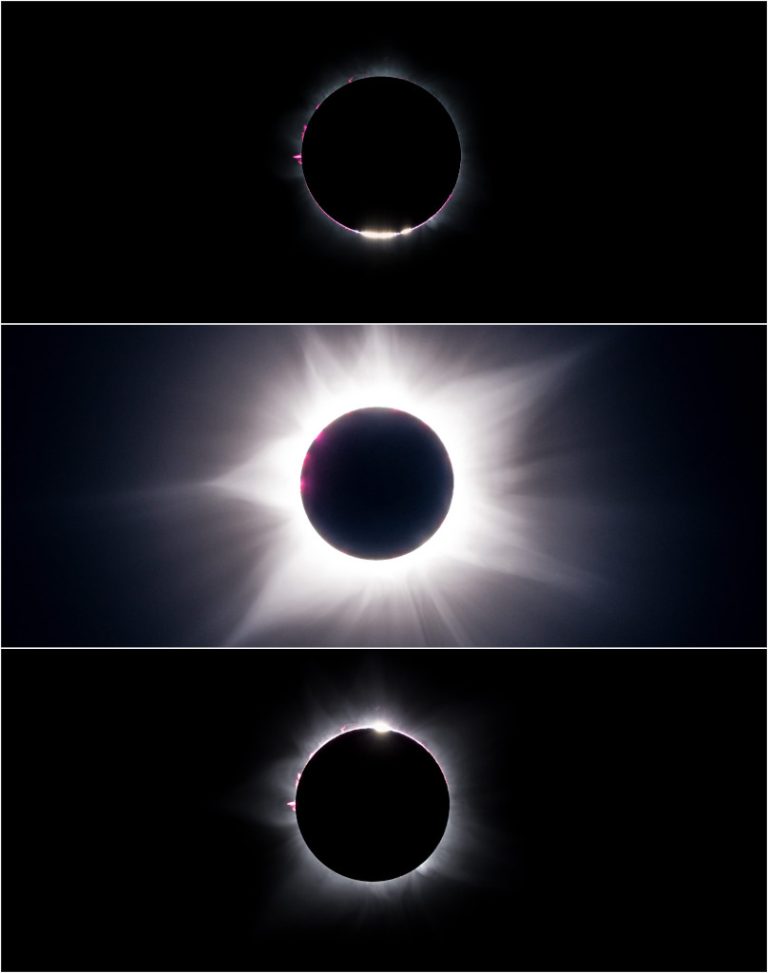
2023年4月21日 Solar Eclipse from Western Australia Image Credit & Copyright: Gwenaël Blanck Explanation: Along a narrow path that mostly avoided landfall, the shadow of the New Moon raced across planet Earth’s southern hemisphere on April 20 to create a rare annular-total or hybrid solar eclipse. A mere 62 seconds of totality could be seen though, when the dark central lunar shadow just grazed the North West Cape, a peninsula in western Australia. From top to bottom these panels capture the beginning, middle, and end of that fleeting total eclipse phase. At start and finish, solar prominences and beads of sunlight stream past the lunar limb. At mid-eclipse the central frame reveals the sight only easily visible during totality and most treasured by eclipse chasers, the…
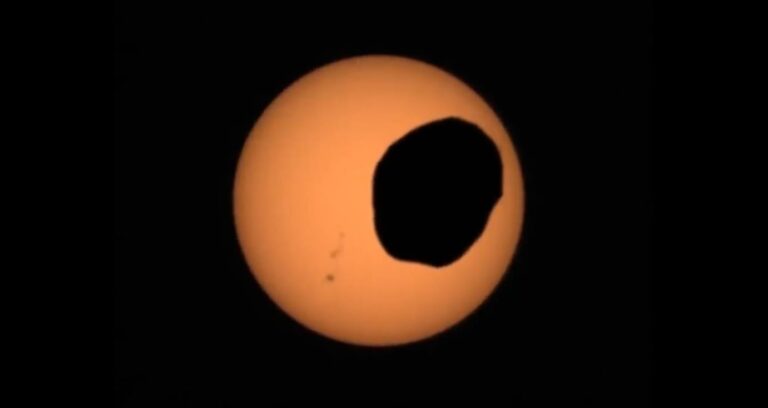
2022年5月9日 A Martian Eclipse: Phobos Crosses the Sun Video Credit: NASA, JPL-Caltech, ASU MSSS, SSI Explanation: What’s that passing in front of the Sun? It looks like a moon, but it can’t be Earth’s Moon, because it isn’t round. It’s the Martian moon Phobos. The featured video was taken from the surface of Mars a month ago by the Perseverance rover. Phobos, at 11.5 kilometers across, is 150 times smaller than Luna (our moon) in diameter, but also 50 times closer to its parent planet. In fact, Phobos is so close to Mars that it is expected to break up and crash into Mars within the next 50 million years. In the near term, the low orbit of Phobos results in more rapid solar eclipses…
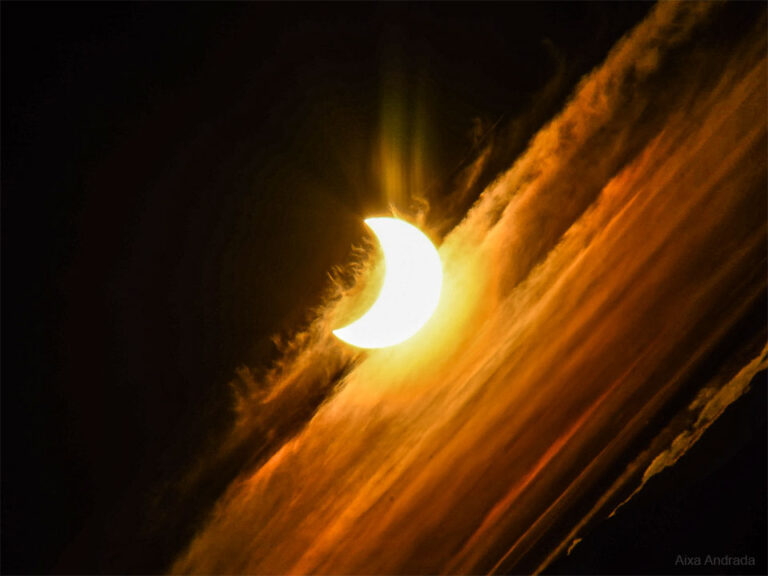
2022年5月2日 Partial Solar Eclipse over Argentina Image Credit & Copyright: Aixa Andrada Explanation: What’s happened to the Sun? Two days ago, parts of South America were treated to a partial solar eclipse — where the Moon blocked out part of the Sun. The featured image shows an image of the partially eclipsed Sun through clouds as it was setting over Patagonia, Argentina. In the tilted image, Earth is toward the right. During the eclipse, the Moon moved partly between Earth and the Sun. Although a visually impressive sight, the slight dimming of surroundings during this partial eclipse was less noticeable than dimming created by a thick cloud. In about two weeks, all of South America and part of North America will experience a total lunar…
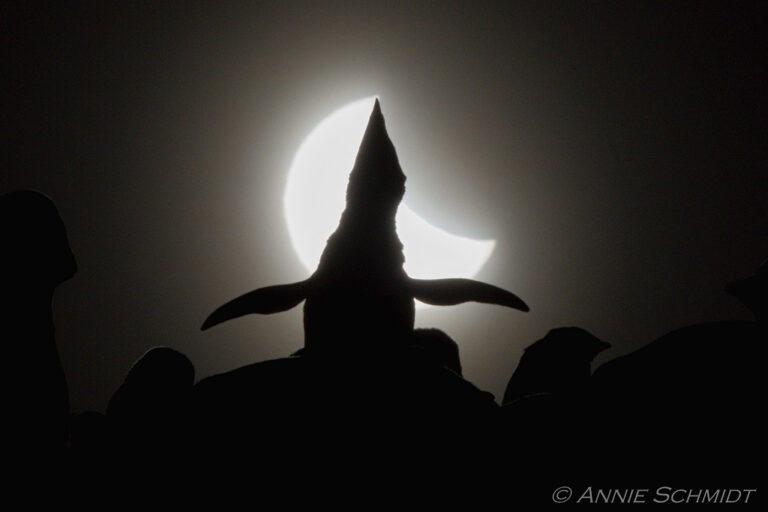
2022年1月7日 Ecstatic Solar Eclipse Image Credit & Copyright: Annie Schmidt (Point Blue Conservation Science) Explanation: A male Adelie penguin performed this Ecstatic Vocalization in silhouette during the December 4 solar eclipse, the final eclipse of 2021. Of course his Ecstatic Vocalization is a special display that male penguins use to claim their territory and advertise their condition. This penguin’s territory, at Cape Crozier Antarctica, is located in one of the largest Adelie penguin colonies. The colony has been studied by researchers for over 25 years. From there, last December’s eclipse was about 80 percent total when seen at its maximum phase as the Moon’s shadow crossed planet Earth’s southernmost continent. Status Updates: Deploying the James Webb Space Telescope Tomorrow’s picture: forgotten constellation 日食的狂喜 影像提供与版权: Annie…
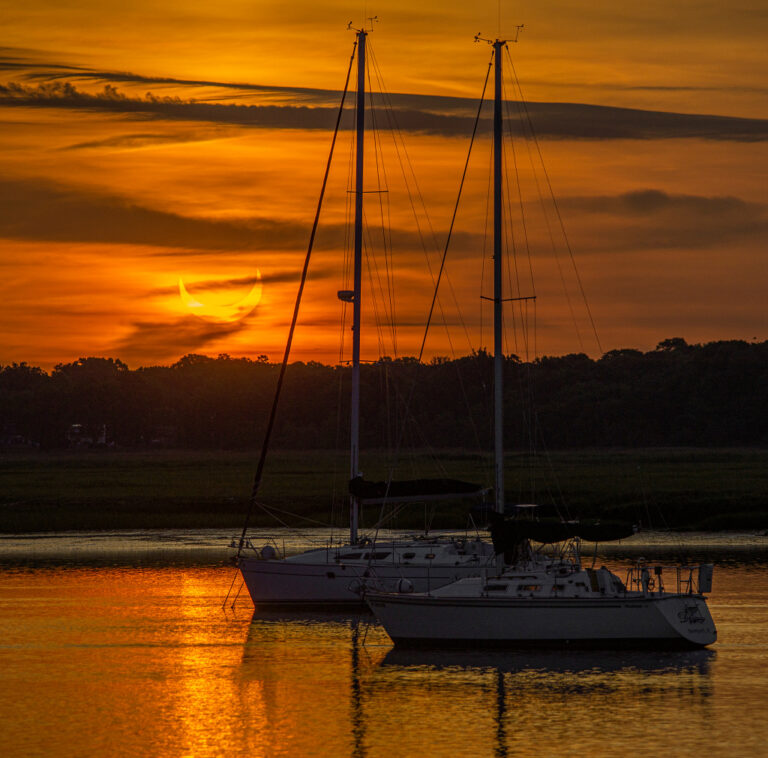
2021年06月12日 Eclipse on the Water Image Credit & Copyright: Elliot Severn Explanation: Eclipses tend to come in pairs. Twice a year, during an eclipse season that lasts about 34 days, Sun, Moon, and Earth can nearly align. Then the full and new phases of the Moon separated by just over 14 days create a lunar and a solar eclipse. Often partial eclipses are part of any eclipse season. But sometimes the alignment at both new moon and full moon phases during a single eclipse season is close enough to produce a pair of both total (or a total and an annular) lunar and solar eclipses. For this eclipse season, the New Moon following the Full Moon’s total lunar eclipse on May 26 did produce an…